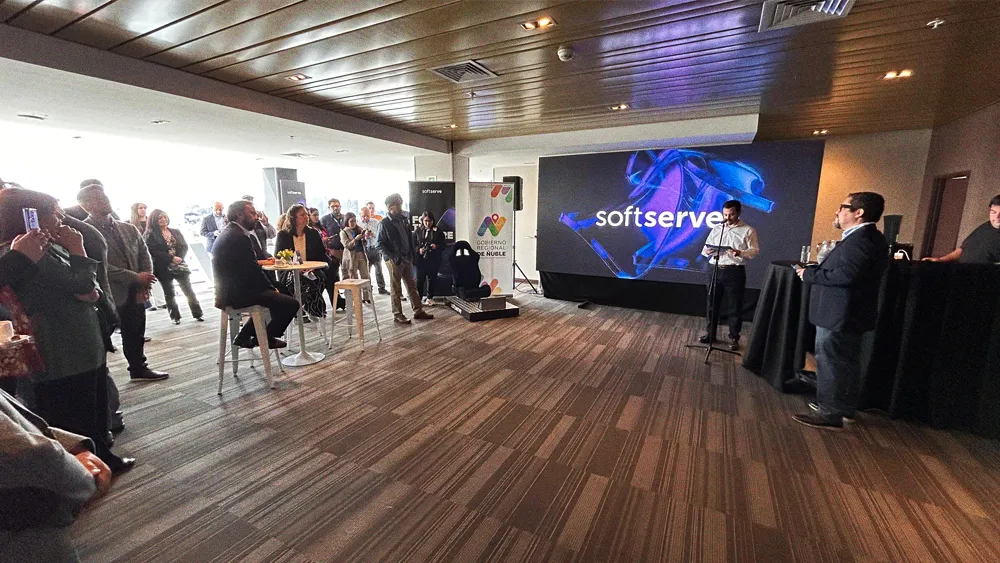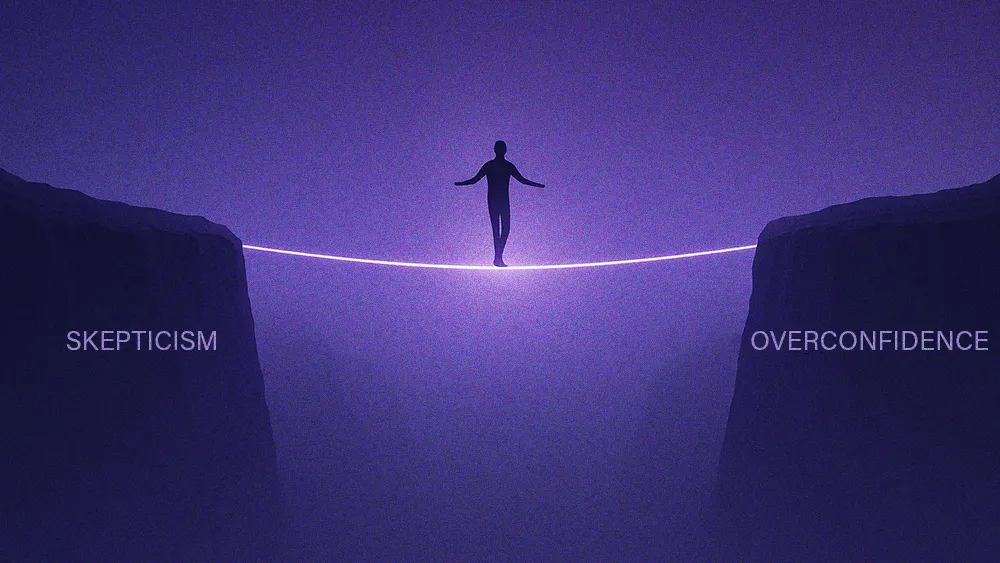Why HR-led change management is the key to solving AI’s great divide

Key Points
A growing gap in AI adoption is creating organizational fragmentation, but the root cause is a lack of HR-led change management, not a technology failure.
According to Jocelyn King, CEO and Founder of VirgilHR, HR professionals must evolve to become the primary architects of AI integration.
King warns that without clear governance and vetting for algorithmic bias, companies face significant legal risks and the uncontrolled spread of “Shadow AI.”
She advocates for a three-step plan focused on executive strategy, building internal change management skills, and transparent communication to upskill the workforce.
We’ll see more design work on jobs—figuring out how much of a role is handled by AI and how much by the person. Communication is key. Employees need to hear, ‘We’re not replacing you with AI; it’s here to help you do your job better.’ That clarity helps them understand what it really means and how it can help.

Jocelyn King
CEO and Founder
VirgilHR
As executives lean into new AI tools to drive strategy, BambooHR reports show that employees are lagging behind, fueling organizational fragmentation and the rise of “Shadow AI.” It’s not a tech glitch; it’s a people problem. And the fix won’t come from another platform, but from a business discipline too many companies overlook: HR-led change management.
We spoke with Jocelyn King, the CEO and Founder of VirgilHR, a SaaS solution for HR compliance. Drawing on a career spent leading HR in high-growth tech companies, King argued that HR professionals must move beyond their traditional roles and become the primary architects of AI integration. Her philosophy is a direct challenge to the fragmented, top-down approach that is failing in so many companies today.
The HR job designer: “We’ll see more design work on jobs—figuring out how much of a role is handled by AI and how much by the person. Communication is key. Employees need to hear, ‘We’re not replacing you with AI; it’s here to help you do your job better.’ That clarity helps them understand what it really means and how it can help.”
For King, before any organization can solve the AI divide, it must diagnose the root cause. The problem isn’t just that executives are more tech-savvy; it’s that the very function meant to manage workforce transitions is often unprepared for the task.
A literacy and skills gap: “One of the first issues is that many HR professionals are not as literate with technology as we would want them to be, yet they’re expected to vet, implement, and ensure adoption of technology they might not even feel comfortable with. We also see that many HR professionals don’t have change management experience, which results in low adoption and engagement with new technology.”
This lack of a formal, HR-led strategy creates a vacuum that employees, eager to be more productive, fill with unsanctioned tools—a phenomenon known as Shadow AI. King argued this isn’t a sign of rebellion, but a rational response to corporate bureaucracy. The only way to bring this activity out of the shadows and harness its innovative spirit is through proactive, transparent governance.
The policy solution: “That’s why many people are quiet about the AI tools they use; they don’t want to go through the security process only to get denied a tool that’s really helpful to them. A very transparent AI usage policy is critical, because if you don’t have that in place, it makes it really difficult for individuals to feel comfortable even expressing that they’re using AI in the first place.”
Vetting for bias: “HR professionals need to be very careful when they’re vetting vendors to make sure that there’s no algorithmic bias, because ultimately they’ll be held liable,” King warned.
Ignoring this governance layer is not an option. The risks of unvetted AI are immense, particularly in core HR functions like hiring, where algorithmic bias can lead to significant legal exposure, as seen in the recent Workday lawsuit. To move from a reactive posture to a proactive one, King laid out a practical, three-step framework for implementing change management that any organization can adopt.
A 3-step plan: First, set strategy from the top. “Executives must align on what technology to implement and how it supports their main objectives.” Second, close the skills gap. “If your HR team lacks change management expertise, hire, upskill, or bring in a consultant.” Finally, prioritize communication. “At the very least, work with your internal comms team to build a clear communication strategy.”
The conversation around AI is often dominated by the fear of job replacement. But King points to real-world examples, like Klarna’s failed attempt to replace customer service agents with AI, as proof that the technology is not yet ready to replace human nuance and connection.
King’s perspective transforms the challenge of AI into an optimistic mandate. The goal is not to displace workers, but to elevate them, a responsibility that falls directly on the shoulders of today’s business leaders. “Rather than people losing their jobs and becoming displaced, we’re going to educate our workforce and upskill them for hopefully more dynamic jobs,” King concluded. “That’s something HR really needs to think about and focus on: how are we upskilling our workforce today to plan for that evolution of change?”
A very transparent AI usage policy is critical, because if you don't have that in place, it makes it really difficult for individuals to feel comfortable even expressing that they're using AI in the first place.

Jocelyn King
CEO and Founder
VirgilHR
A very transparent AI usage policy is critical, because if you don't have that in place, it makes it really difficult for individuals to feel comfortable even expressing that they're using AI in the first place.

Jocelyn King
CEO and Founder
VirgilHR
Related articles
TL;DR
A growing gap in AI adoption is creating organizational fragmentation, but the root cause is a lack of HR-led change management, not a technology failure.
According to Jocelyn King, CEO and Founder of VirgilHR, HR professionals must evolve to become the primary architects of AI integration.
King warns that without clear governance and vetting for algorithmic bias, companies face significant legal risks and the uncontrolled spread of “Shadow AI.”
She advocates for a three-step plan focused on executive strategy, building internal change management skills, and transparent communication to upskill the workforce.

Jocelyn King
VirgilHR
CEO and Founder

CEO and Founder
As executives lean into new AI tools to drive strategy, BambooHR reports show that employees are lagging behind, fueling organizational fragmentation and the rise of “Shadow AI.” It’s not a tech glitch; it’s a people problem. And the fix won’t come from another platform, but from a business discipline too many companies overlook: HR-led change management.
We spoke with Jocelyn King, the CEO and Founder of VirgilHR, a SaaS solution for HR compliance. Drawing on a career spent leading HR in high-growth tech companies, King argued that HR professionals must move beyond their traditional roles and become the primary architects of AI integration. Her philosophy is a direct challenge to the fragmented, top-down approach that is failing in so many companies today.
The HR job designer: “We’ll see more design work on jobs—figuring out how much of a role is handled by AI and how much by the person. Communication is key. Employees need to hear, ‘We’re not replacing you with AI; it’s here to help you do your job better.’ That clarity helps them understand what it really means and how it can help.”
For King, before any organization can solve the AI divide, it must diagnose the root cause. The problem isn’t just that executives are more tech-savvy; it’s that the very function meant to manage workforce transitions is often unprepared for the task.
A literacy and skills gap: “One of the first issues is that many HR professionals are not as literate with technology as we would want them to be, yet they’re expected to vet, implement, and ensure adoption of technology they might not even feel comfortable with. We also see that many HR professionals don’t have change management experience, which results in low adoption and engagement with new technology.”
This lack of a formal, HR-led strategy creates a vacuum that employees, eager to be more productive, fill with unsanctioned tools—a phenomenon known as Shadow AI. King argued this isn’t a sign of rebellion, but a rational response to corporate bureaucracy. The only way to bring this activity out of the shadows and harness its innovative spirit is through proactive, transparent governance.
The policy solution: “That’s why many people are quiet about the AI tools they use; they don’t want to go through the security process only to get denied a tool that’s really helpful to them. A very transparent AI usage policy is critical, because if you don’t have that in place, it makes it really difficult for individuals to feel comfortable even expressing that they’re using AI in the first place.”
Vetting for bias: “HR professionals need to be very careful when they’re vetting vendors to make sure that there’s no algorithmic bias, because ultimately they’ll be held liable,” King warned.

Jocelyn King
VirgilHR
CEO and Founder

CEO and Founder
Ignoring this governance layer is not an option. The risks of unvetted AI are immense, particularly in core HR functions like hiring, where algorithmic bias can lead to significant legal exposure, as seen in the recent Workday lawsuit. To move from a reactive posture to a proactive one, King laid out a practical, three-step framework for implementing change management that any organization can adopt.
A 3-step plan: First, set strategy from the top. “Executives must align on what technology to implement and how it supports their main objectives.” Second, close the skills gap. “If your HR team lacks change management expertise, hire, upskill, or bring in a consultant.” Finally, prioritize communication. “At the very least, work with your internal comms team to build a clear communication strategy.”
The conversation around AI is often dominated by the fear of job replacement. But King points to real-world examples, like Klarna’s failed attempt to replace customer service agents with AI, as proof that the technology is not yet ready to replace human nuance and connection.
King’s perspective transforms the challenge of AI into an optimistic mandate. The goal is not to displace workers, but to elevate them, a responsibility that falls directly on the shoulders of today’s business leaders. “Rather than people losing their jobs and becoming displaced, we’re going to educate our workforce and upskill them for hopefully more dynamic jobs,” King concluded. “That’s something HR really needs to think about and focus on: how are we upskilling our workforce today to plan for that evolution of change?”




